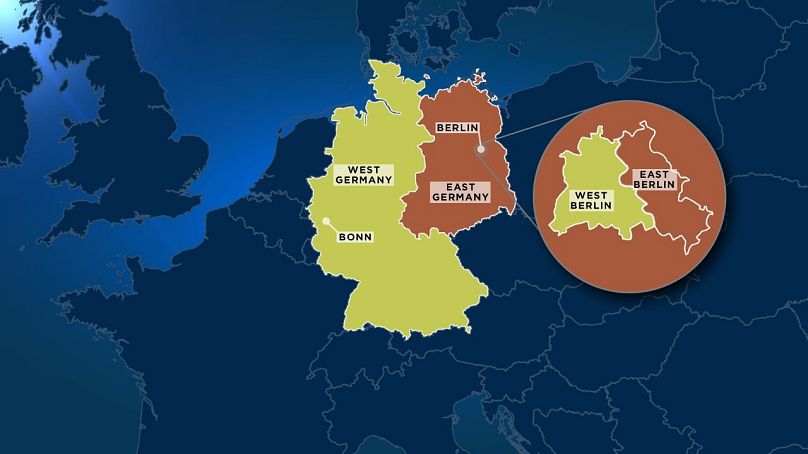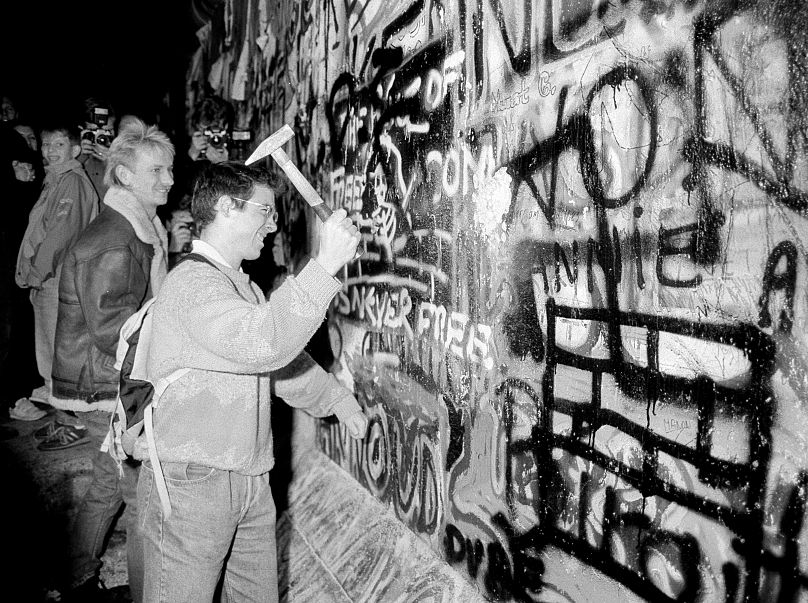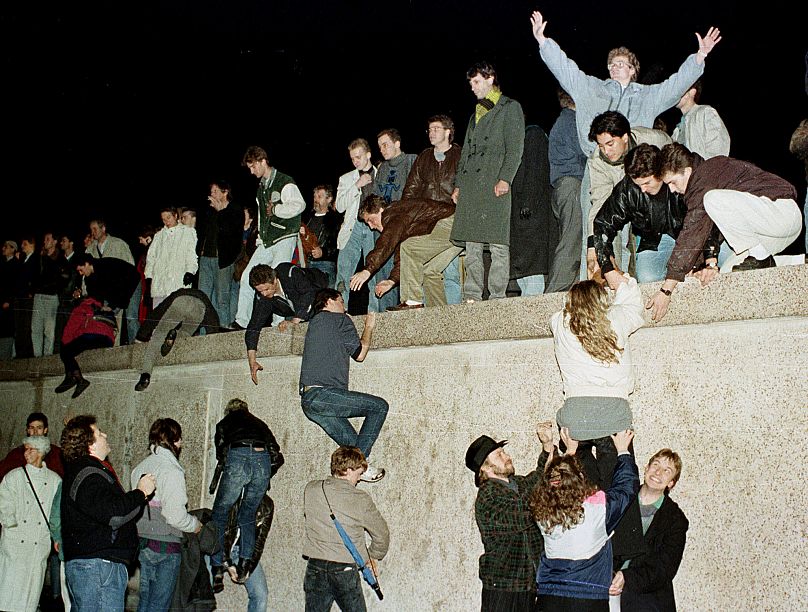An idiot's guide to exactly what went down 30 years ago - and why it matters.
On 9 November, 2019, the world will mark 30 years since the fall of the Berlin Wall, which was widely seen as marking the end of the Cold War and paved the way for a united Germany and, ultimately, a united Europe after decades of division.
But why was the Berlin Wall built and what led to its fall? Euronews has the lowdown.
What was the Berlin Wall?
After defeating the Nazis in 1945, the Allies – Britain, France, the US and the USSR – divided Germany into administrative zones. The area that became East Berlin was controlled by the Soviets, while West Berlin became a Western-administered enclave.
At first, it was possible for Germans to cross freely between the zones, but as relations between the USSR and the West soured with the beginning of the Cold War, restrictions were gradually introduced. Checkpoints became barbed-wire fences, which became barriers.
As more and more Germans left the east of the country for the west – 3.5 million by 1961 – the Soviet Union decided something drastic needed to be done, and on 13 August, 1961, work began on the 155-kilometre wall that would divide the city for the next 30 years.
Because the city of Berlin was inside the Soviet-administered section of Germany, West Berlin effectively became an island, surrounded on all sides by the German Democratic Republic, a Soviet satellite state run by a Communist government.
What was Checkpoint Charlie?
The destination of countless tourists to Berlin, Checkpoint Charlie was one of the primary crossing points between east and west, used by diplomats, officials, journalists and tourists with one-day permits to cross into East Berlin.
A lesser-known fact about Checkpoint Charlie is how it got its name. It was the third checkpoint established by the Allies in and around Berlin after Helmstedt-Marienborn (Alpha) and Dreilinden-Drewitz (Bravo). Charlie is the third letter of the NATO phonetic alphabet.
Did people try to cross the wall?
According to data from the Berlin Wall Memorial, at least 140 people were killed trying to cross the Berlin Wall between 1961 and 1989, including 101 East Germans who were killed, died by accident or committed suicide while trying to cross.
What happened on 9 November, 1989?
The year 1989 was a pivotal one for Europe. In Poland and Hungary, after decades of struggle, democratic governments had replaced Soviet regimes. In Romania, Communist dictator Nicolae Ceauşescu was overthrown and executed. Over in the Czech Republic, protest was growing once again which would eventually lead to the so-called Velvet Revolution.
Unlike in 1956 and 1968 – when the Soviet Union sent in troops to prop up Communist governments in Hungary and then-Czechoslovakia – the USSR under Mikhail Gorbachev did not intervene in the revolutions. In fact, Soviet troops began to withdraw from the satellite states.
Gorbachev had from the mid-1980s instituted a programme known as Perestroika ("restructuring") as part of his Glasnot ("openness) policy which decentralised economic controls and reduced the Communist party's grip on the economy and local governance.
On 9 November, shortly after Gorbachev had visited the German Democratic Republic, the Communist authorities in East Berlin made the shock announcement that citizens would be permitted to travel to the West. Within hours, thousands had taken to the streets.
In downtown Berlin, young people from both sides clambered on to the wall with picks and hammers and flooded border crossings. The next day the chancellor of West Germany, Helmut Kohl, told a crowd of 20,000: “We are one nation!” In total, 100,000 people crossed to the West in 24 hours.
Then what happened?
The fall of the Berlin Wall was considered then, as it is now, effectively the end of the Cold War. After four and a half decades, Germany was formally united on 3 October, 1990.
In 1991, Kohl, whose governing coalition had won a large majority in elections in December 1990, helped establish the European Union and within a decade the euro, the EU’s single currency, had been established.
But gaps between West and East remain. The East German economy had been ravaged by 40 years of Communist rule, and for more than a decade, the areas formerly behind the Iron Curtain suffered from massive unemployment and economic malaise.
Meanwhile, revelations about the activities of the East German state and its secret police, the Stasi, raised uncomfortable questions – especially for those whose friends, neighbours and family members had worked for it.














